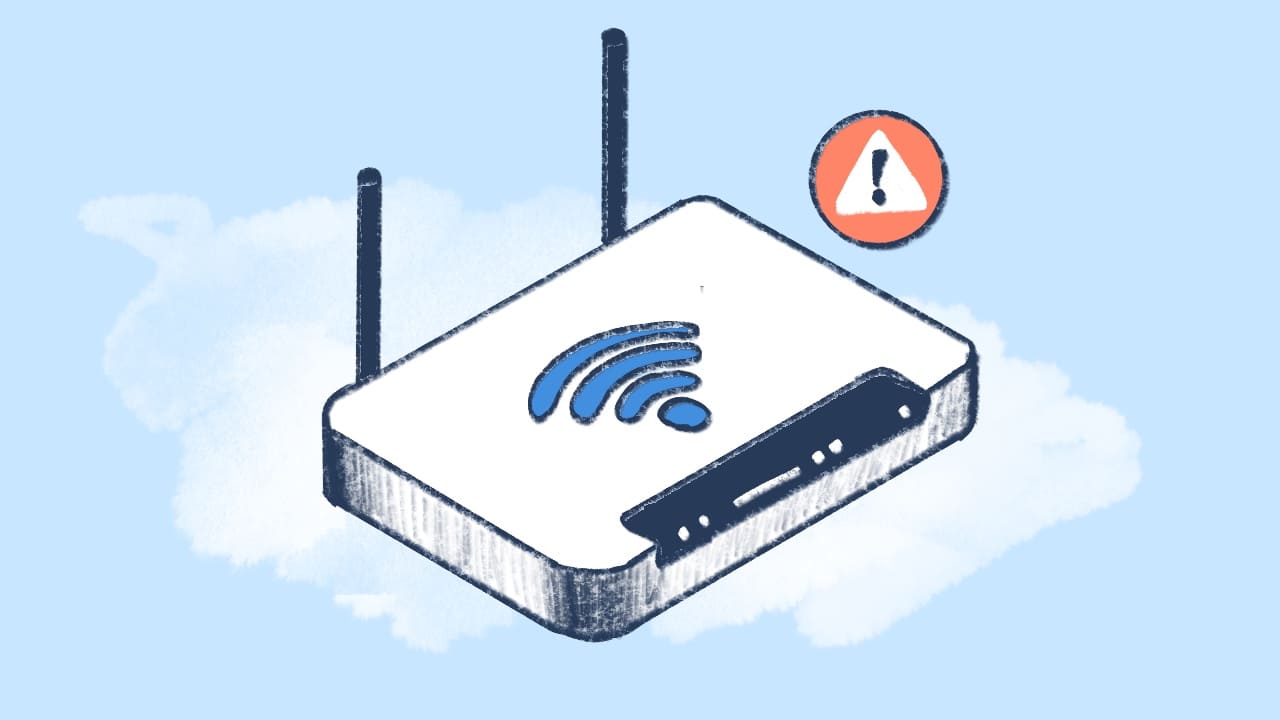One essential tool for maintaining network security is the packet sniffer. Are you looking for the best packet sniffer tool? You’ve hit the right spot!
It's no news that today, data is everything. The success of businesses, governments, and individuals depends heavily on their networks' smooth functioning and the data that travels across them. However, with the increasing sophistication of cyberattacks, network security has become more critical than ever.
In this article, we will examine the 10 best packet sniffers available today, how they work, and what features to look for when choosing the right tool for your network security needs.

What are packet sniffer tools?
A packet sniffer, or network analyzer, is software or hardware designed to capture, filter, and monitor data packets as they traverse a network.
Packets are the small units of data that travel over networks, containing everything from user requests and application data to security credentials. Packet sniffers provide insight into these packets, revealing essential information such as packet sources, destinations, and protocols used.
Security specialists, network administrators, and IT professionals often rely on these network analysis tools to detect anomalies, pinpoint bottlenecks, and ensure proper network configurations. Packet sniffers also help identify potential cyber threats by monitoring suspicious traffic, making them essential in today’s network security landscape.

Methodology: How we selected the top packet sniffing tools
To choose the top packet sniffers, we evaluated tools across several criteria to suit different needs and expertise levels:
- Protocol support: The number and types of protocols a tool can analyze.
- User interface: Whether it has a user-friendly graphical interface or relies on a command line.
- Features for advanced packet analysis: Availability of filters, visualizations, and network behavior insights.
- User community and support: Community and documentation availability, especially for open-source options.
- Cost: Whether the tool is free, open-source, or requires a subscription or license.
These factors help narrow down choices based on the use case, user experience level, and network size, ensuring you can find a tool that aligns well with your specific network requirements.
Top 10 packet sniffer tools
Here's a closer look at some of the most reliable packet sniffer tools available today, each bringing distinct features and benefits.
Free packet sniffer tools
When budget constraints are a factor, free packet analyzers offer powerful capabilities without the cost. These are our top choices:
1. Wireshark
Wireshark is one of the most popular packet sniffers available, and for a good reason. It is an open-source tool that is free to use and is available on Windows, Linux, and macOS. Wireshark is a renowned network protocol analyzer; it can capture traffic from hundreds of different protocols.
- Key features:
- Real-time packet capture with detailed analysis.
- Graphical and command-line interfaces for flexibility.
- Protocol support: Hundreds of network protocols, including HTTP, TCP/IP, and DNS.
- Extensive filters and visualizations for in-depth traffic analysis.
- Best for: Network administrators, security analysts, and anyone requiring a robust, feature-rich tool for diverse protocol analysis.
2. Tcpdump
Tcpdump is a lightweight packet sniffer that operates via a command-line interface (CLI) and is available on Linux and macOS. It is a lightweight and efficient tool that can capture and analyze traffic from a wide range of protocols. Tcpdump is a powerful network troubleshooting and analysis tool, but its command-line interface can be intimidating for novice users.
- Key features:
- Command-line-based, offering efficient network analysis.
- Ability to capture and analyze packets based on customizable filters.
- Protocol support includes TCP, UDP, ICMP, and others.
- Best for: Advanced users comfortable with the command line who need a reliable tool for protocol analysis and network troubleshooting.

3. Ettercap
Ettercap is a free, open-source packet sniffer that is available on Windows and Linux. It is a versatile tool that can be used for a wide range of network analysis tasks, including network monitoring, packet sniffing, and network intrusion detection. Ettercap can capture and analyze traffic from a wide range of network protocols and includes advanced features like ARP poisoning and DNS spoofing.
- Key features:
- Advanced analysis tools for intrusion detection.
- Supports ARP poisoning and DNS spoofing.
- Capture and analyze traffic across multiple protocols.
- Best for: Security-focused users who need advanced network monitoring and intrusion detection capabilities.
4. Ngrep (Network Grep)
Ngrep offers a simplified, command-line-based approach to packet sniffing and filtering. It works on Linux and UNIX systems, capturing traffic and matching it against specified patterns.
- Key features:
- Pattern-matching and protocol filtering.
- Simple command-line interface.
- Optimized for Linux/UNIX systems.
- Best for: Users needing targeted, pattern-based network analysis in a Linux/UNIX environment.
5. Kismet
Kismet specializes in wireless network packet sniffing and is compatible with Linux, macOS, and Windows. It supports multiple network interfaces and can detect hidden networks.
- Key features:
- Wireless sniffing for Wi-Fi networks.
- Detects hidden and rogue networks.
- Cross-platform support with advanced filtering.
- Best for: Network professionals focused on wireless monitoring and security analysis.

Paid packet sniffer tools
Investing in paid packet sniffer tools often provides advanced features, dedicated support, and seamless integration with other network management solutions. They mainly cater to the needs of larger enterprises.
These are our top picks:
1. Microsoft Message Analyzer
Microsoft Message Analyzer is a powerful packet sniffer designed specifically for Windows networks. It can capture and analyze traffic from various network protocols, including Microsoft-specific protocols like SMB and Kerberos. Microsoft Message Analyzer also includes a powerful filtering system that allows users to identify and analyze specific types of traffic quickly.
- Key features:
- Supports both live capture and log file analysis.
- Windows-focused, with support for Microsoft-specific protocols.
- Advanced filtering capabilities.
- Best for: Windows network administrators and IT professionals working in Microsoft-heavy environments.
2. Colasoft Capsa
Colasoft Capsa is a commercial packet sniffer that is available on Windows. It has a free version for users, but it is limited in terms of functionality and time. Colasoft Capsa includes many network analysis and troubleshooting features, like real-time network traffic monitoring and visual analysis tools.
- Key features:
- User-friendly interface with visual analysis and reporting tools.
- Real-time network traffic monitoring.
- Protocol analysis and network troubleshooting capabilities.
- Best for: Small to medium-sized businesses looking for a packet sniffer with both free and premium options.

3. SolarWinds Deep Packet Inspection
Part of SolarWinds Network Performance Monitor, this packet sniffer offers robust monitoring and analysis features for Windows. It integrates seamlessly with other SolarWinds tools, providing deep packet inspection and real-time insights.
- Key features:
- Deep packet inspection with protocol analysis.
- Integrates with SolarWinds’ suite of network tools.
- Real-time alerts and comprehensive reporting.
- Best for: Enterprises needing an integrated, Windows-based solution with advanced monitoring capabilities.
4. ManageEngine NetFlow Analyzer
ManageEngine NetFlow Analyzer provides both packet capture and flow-based network analysis for Linux and Windows, making it suitable for large-scale environments. It includes alerting, reporting, and support for various network protocols.
- Key Features:
- Flow-based analysis and packet capturing.
- Real-time alerting and in-depth reporting.
- Compatibility with Linux and Windows.
- Best for: Large enterprise networks with complex monitoring requirements.
5. Observer Analyzer by Viavi Solutions
Observer Analyzer is a comprehensive packet sniffer aimed at large enterprise environments, offering packet capture, performance analysis, and extensive data visualization. It provides real-time monitoring and statistical tools for in-depth analysis.
- Key features:
- Detailed packet capture and performance metrics.
- Real-time monitoring and alerting.
- Advanced reporting and visualization options.
- Best for: Enterprise-level network management with high standards for data analysis and visualization.

What does a network sniffer consist of?
A network sniffer typically consists of both software and hardware components designed to capture and analyze network traffic. The main components include:
- Capture engine: This part captures the data packets from the network. It listens to network interfaces and collects data for analysis.
- Packet decoder: After capturing the packets, the sniffer decodes the data to provide insights into the content and structure of each packet.
- Graphical user interface: This is the tool's front end, where users can interact with the data. A user-friendly interface allows for easy navigation, filtering, and analysis of captured packets.
- Reporting features: Many sniffers come with built-in reporting capabilities to summarize findings, highlight anomalies, or generate visual representations of the network traffic.
How to choose a packet sniffer tool
Not all packet sniffers offer the same capabilities or compatibility, so it’s important to know which features align best with your network needs and environment. Below, we break down the essential features to look for and the compatibility factors to consider, guiding you toward a packet sniffer that can deliver both performance and flexibility.
Core features to look for
-
Protocol analysis
The tool should support a broad range of network protocols, offering detailed insight into traffic on the network. This versatility is essential for diagnosing issues across complex network environments. -
Real-time monitoring
With real-time monitoring, administrators can quickly spot network issues or security incidents and respond immediately, keeping disruptions minimal. -
Traffic filtering
Filtering options let administrators focus on specific traffic by IP, port, or protocol, enabling more precise analysis and troubleshooting within targeted areas of the network. -
Statistical analysis
Built-in statistical analysis features allow users to observe patterns in network traffic, helping to identify trends that could point to performance or security issues over time.
Compatibility and adaptability factors
-
Integration with other tools
Packet sniffers with integration options can be used within larger network management and security frameworks, allowing streamlined workflows and data consolidation with other tools. -
User interface and ease of use
A user-friendly interface can make routine monitoring and troubleshooting more efficient. An intuitive design helps new users learn quickly and ensures essential data is easily accessible. -
Compatibility with operating systems
Not all packet sniffers support every operating system, so knowing your OS requirements—Windows, macOS, Linux, or a combination—is important. For example, Wireshark offers cross-platform support, while Tcpdump is primarily for Linux environments.

Enterprise packet sniffers and network traffic analysis
Enterprise packet sniffers are specialized tools designed to monitor and analyze network traffic at scale. Unlike consumer-level tools, enterprise packet sniffers are tailored to meet the demands of larger organizations with complex network architectures.
These tools focus primarily on capturing data packets as they travel across a network, providing insights into the overall performance and security of the network infrastructure.
These are some of the features you should look for when it comes to monitoring enterprise-level network communications.
-
Advanced filtering and reporting
Enterprise-level sniffers often include sophisticated filtering options that allow users to isolate specific types of traffic for deeper analysis. Customizable reports provide actionable insights that help network managers make informed decisions. -
Integration with Security Information and Event Management (SIEM) Systems
Many enterprise packet sniffers can integrate seamlessly with SIEM tools, enabling a holistic view of network security. This integration allows organizations to correlate network traffic data with security events, enhancing their ability to detect and respond to threats. -
Scalability and performance
Designed to handle large volumes of traffic, enterprise packet sniffers can scale with an organization’s growing network demands. They support distributed environments, ensuring consistent monitoring across multiple locations. -
Compliance and reporting
Many industries have specific regulations regarding data handling and network security. Enterprise packet sniffers can generate detailed reports that help you demonstrate compliance, reducing the risk of facing penalties.

Final words
In conclusion, packet sniffers play an essential role in modern network management. They capture and analyze network data, providing valuable insights that can enhance security, improve performance, and facilitate effective troubleshooting.
With this data, administrators can identify and troubleshoot network problems, detect network intrusion attempts, and monitor network performance.
The ones we listed are just a few of the many packet sniffers available, each with its own unique set of features and capabilities. Choosing the right packet sniffer depends on your specific needs and requirements, but any of these tools can be a valuable asset in network analysis and troubleshooting.
Frequently Asked Questions
What is a packet sniffer?
A packet sniffer, also known as a network analyzer, is a tool designed to capture and analyze data packets as they travel across a network. It helps network administrators monitor traffic, troubleshoot issues, and identify security threats.
Are there free packet sniffer tools available?
Yes, there are several free packet sniffer tools available, such as Wireshark and Tcpdump. These tools offer basic functionality suitable for small networks or for those who are just starting to explore network analysis.
What are the main features to look for in a packet sniffer?
Key features to consider include protocol analysis, real-time monitoring, traffic filtering, packet capture and analysis, statistical analysis, integration capabilities, and ease of use.
Can packet sniffers be used for malicious purposes?
Yes, while packet sniffers are valuable for network management and security, they can also be misused by malicious actors to capture sensitive information. It's essential to use these tools responsibly and ethically.
How can packet sniffers enhance network security?
Packet sniffers provide insights into network traffic, enabling administrators to identify anomalies, detect unauthorized access, and monitor for suspicious activity, thereby improving the overall security posture of the network.















